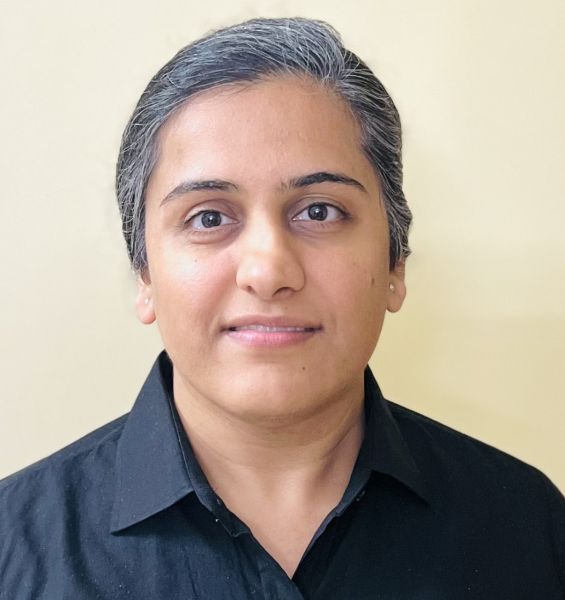In the latest episode of Dinis Guarda YouTube Podcast, Thomas Kiddle and Manthan Dave, co-founders and co-CEO of Palisade Inc. share their perspectives on integrating Decentralised Finance (DeFi) with traditional regulated finance. The podcast is powered by Businessabc.net and citiesabc.com.

Thomas Kiddle and Manthan Dave are the co-founder and co-CEO of Palisade Inc., a company dedicated to bridging the gap between traditional finance and the emerging world of decentralised finance (DeFi).
Thomas Kiddle is a software engineer and entrepreneur, with over two decades of background in e-commerce, payments, and blockchain. He is passionate about using blockchain technology to create secure and compliant wallet solutions and to transform industries.
Manthan Dave is a technology leader with expertise in blockchain and fintech, emphasising the transformative potential of DeFi to democratise finance and enable rapid, cross-asset transactions. Under his leadership, Palisade aims to lead the integration of DeFi into regulated financial systems.
Speaking about their strategy for incorporating decentralised finance for businesses, Manthan explains to Dinis:
“Palisade’s primary mission is to enable businesses to onboard the next billion people into crypto. We start with wallets because they are fundamental to blockchain technology. The user experience (UX) of wallets has long been problematic. For instance, if you use a decentralised autonomous organisation (DAO) to buy carbon credits, you typically need your own wallet. It’s unrealistic to expect everyone to use MetaMask or manage their own crypto wallets securely.”
At Palisade, we simplify this process by providing businesses with a better UX, allowing them to focus on their core functions without worrying about security and compliance. Just as a computer like a MacBook comes with built-in security, our platform ensures that businesses don’t need to manage security risks themselves. Instead, they can concentrate on solving their own industry-specific problems.”
With Palisade, businesses can integrate our API to issue wallets, create carbon credits, and manage NFTs while relying on our secure, compliant infrastructure. This approach lets businesses focus on innovation and improving their products without being bogged down by underlying technical complexities.”
Thomas elaborates further and says: “In super simple terms, our goal is to provide secure and compliant wallets and custody services to businesses. We’re here to transform industries by leveraging web3 technology. Over time, we aim to build a secure network of wallets and applications on web3, setting the standard for compliance and security.
Web3 today has many wallet providers, but few are focused on compliance like we are. Our vision includes improving tools for businesses, not just providing wallets. We believe that while wallets are crucial, they are just the beginning. Our broader goal is to equip businesses with all necessary tools for success in the Web3 space.”
Integration of DeFi and regulated finance
The integration of Decentralised Finance (DeFi) with traditional regulated finance is shaping the future of financial transactions and investments.
Manthan highlights the transformative potential of DeFi:
“DeFi is quite complex compared to the traditional finance world. It’s not just fintech; it’s fintech on steroids. What’s really good about DeFi is that it enables you to move money at the speed of light, not only in one direction but across multiple assets. It makes finance really accessible, allowing individuals to provide liquidity on a decentralised exchange, something that isn’t possible in the traditional finance world.
If I wanted to use my NVIDIA shares to make money on NASDAQ by providing liquidity, it’s incredibly difficult because NASDAQ operates as a centralised exchange. DeFi democratises access to finance, solving this problem with transparency, audibility, and finality on the blockchain.”
Thomas further explains:
“One of the most exciting use cases for me at the moment is working with a company based in a jurisdiction where there are very few investment opportunities. By tokenising real-world assets like luxury real estate, they are bringing new investment opportunities to the citizens of that jurisdiction. All of a sudden, citizens can invest in the improvement and development of their own nation. Before, they didn’t have anything to invest in as there was no stock exchange. Now, they can start investing in the development of their area, which is extremely transformative and exciting.
Palisade helps by providing tokenisation capabilities built on top of secure, regulated custody. Essentially, they are building their business on a highly regulated, secure infrastructure.”
Blockchain for effective digital asset management
Manthan highlights the potential of blockchain technology in revolutionising carbon credit markets. He explains:
“The blockchain is actually very good for this because one of the biggest innovations on blockchain was that it prevents double spend. If you issue something on-chain that is verifiable, it’s there, it’s immutable, and it cannot be changed. What this customer is doing is minting carbon credits using proof of decarbonisation. They prove that they’ve sequestered a certain amount of carbon or absorbed carbon from the air. That proof is used as an NFT, which acts as a ticket to mint a certain amount of tokens or carbon credits.
DeFi kind of supercharges that because once you have tokens that have value, DeFi brings that access to a broader audience. It brings access to a broader DeFi financial system. As long as that token is compliant, interoperable, or based on some kind of interoperable standard, you can make it instantly tradable and bring liquidity to that specific token. Liquidity basically means accessibility. Once you have liquidity behind carbon credits, and they can be tradable, the person who created those carbon credits can be rewarded based on that.
From a broader perspective, digital assets can disrupt the carbon credit space by making everything more accessible. It empowers farmers and people working on the ground to create carbon credits as a way to sustain themselves. These credits, if issued on the right platform with the right standard and verifiable, can have liquidity associated with them on-chain and off-chain. Ultimately, those solving the problem at the root can be rewarded by selling those carbon credits in the open market, getting the best price without tons of intermediaries. It’s about accessibility and ensuring the shortest path between seller and buyer.”
Thomas elaborates on the transformative role of DeFi in the context of carbon credits, stating:
“One of them is the lack of a standard. Each jurisdiction has different rules and regulations around it. The ability to prevent fraud and manipulation has been problematic, and blockchain can solve both of those problems.”
Blockchain, by default, provides great transparency and auditability. All it needs is a wallet address, and I can go look at every transaction that has happened. This makes it more difficult to manipulate and misreport. The problem around standards and fragmentation can be solved through contract standards. We can build a standard, a token standard, or a protocol around this to ensure everyone across the globe adheres to a specific framework. It’s not as simple as building a technical solution and expecting everyone to stick to it, but blockchain has a transformative effect on these problems.”
The future of digital assets
The digital asset landscape is evolving rapidly, encompassing a diverse array of asset types including cryptocurrencies, non-fungible tokens (NFTs), stablecoins, and tokenised real-world assets.
Manthan elaborates on the broad scope and evolving nature of digital assets, stating:
“Digital assets are assets that are issued on a ledger. The term covers a really broad range of different asset types, including non-fungible tokens, utility tokens, tokenised real-world assets, currencies, and stablecoins. Over the past 10 years, we’ve seen the term ‘cryptocurrency’ evolve into this broader definition of digital assets because new use cases have emerged.
The actual definition depends on what the asset is pegged to or what the use case is. For example, an asset that gives you equity in a house could be classed as a security, while an asset pegged to a dollar is classed as a stablecoin. The key issue now is the lack of clear regulatory clarity, as businesses operating in the space demand more precise definitions from regulators.”
Thomas emphasises the regulatory challenges faced by custody providers and the need for clear frameworks. He remarks:
“Digital assets have an extremely broad definition that means you know many different things and can be applied to many different token types… I think what that really means for custody providers and wallet providers is that each different asset type has its own regulatory obligations. As a custody provider, we have to either ensure that we’re within regulation when we’re holding and interacting with these assets on behalf of clients or that we’re not holding them if we don’t have the relevant licenses and that’s definitely a challenge.”
Thomas highlights the necessity of making blockchain technology more approachable:
“The blockchain industry for a long time has been dominated by tech-heavy teams and individuals who have done an amazing job building out the low-level networks and protocols. If we’re going to talk about mainstream adoption, we have to make it easy, relatable, understandable, and digestible. That means great user experience, seamless UX, and clean, easy-to-understand user interfaces that abstract away all of those complexities.”
Emphasising the importance of simplifying user interactions, Thomas says:
“Builders in the space now are not just focused on the low-level technical details of the protocol but on how to make this applicable to the average person, thus making it globally adopted. Bringing in people who focus on user experience and building great products is essential.”

Pallavi Singal is the Vice President of Content at ztudium, where she leads innovative content strategies and oversees the development of high-impact editorial initiatives. With a strong background in digital media and a passion for storytelling, Pallavi plays a pivotal role in scaling the content operations for ztudium’s platforms, including Businessabc, Citiesabc, and IntelligentHQ, Wisdomia.ai, MStores, and many others. Her expertise spans content creation, SEO, and digital marketing, driving engagement and growth across multiple channels. Pallavi’s work is characterised by a keen insight into emerging trends in business, technologies like AI, blockchain, metaverse and others, and society, making her a trusted voice in the industry.












